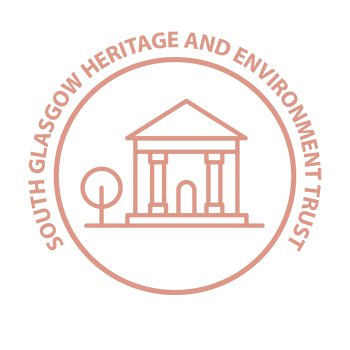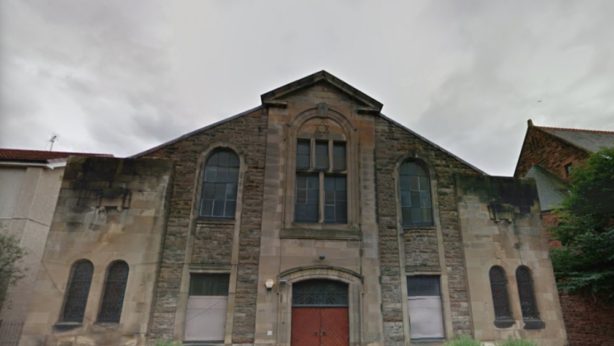FEATURED
Queen’s Park Synagogue and Langside Synagogue
Queen’s Park and Langside synagogues form a fascinating part of South Glasgow’s heritage.
Scotland’s Jewish Community
Many Jewish people moved to the UK in the twenty years leading up to World War I, fleeing the Russian pogroms, with later generations moving to Glasgow, as a result of Nazi persecution. The Scottish Jewish community was once considerable, with about 15,000 Jewish people living in Glasgow in 1939. While some communities were established in Garnethill, many settled in areas such as the Gorbals, Govanhill, Battlefield, Langside, and Shawlands. The Gorbals was a real hub, with a Zionist Centre (which later moved to Queen Square), the Jewish Institute, the Jewish Board of Guardians, and the majority of the synagogues, kosher butchers, bakers, and Jewish grocery shops. Sophie Geneen also ran Geneen’s Hotel in the Gorbals, where she dispensed charity and food to those in need.
Synagogues in the Southside
Further south, Queen’s Park Synagogue was founded in 1906, and moved to a substantial new building in Falloch Road in 1926. About the same time, Langside Synagogue, originally founded in 1915, moved to Niddrie Road. In later years synagogues were established in Pollokshields (1929), Giffnock and Newlands (1934), Netherlee and Clarkston (1940) and Newton Mearns (1954). A Reform synagogue opened in Pollokshields in 1931, and later moved to Newton Mearns. A short-lived community was also established in Hillington, Mosspark and Cardonald (1937). Queen’s Park eventually closed in 2002; Langside Synagogue remained active for longer but closed in 2014.
Queen’s Park Synagogue
Land in Lochleven Road, donated by Sir John Stirling Maxwell for a nominal sum, was to become the Queen’s Park Synagogue. Plans were put on hold during World War I. A ‘tin Shool’ of concrete with a corrugated metal roof was constructed temporarily. Surviving plans show a simple building with pitched roof covered with asbestos tiles. The official Queen’s Park synagogue opened in the mid-1920s. It was designed by McWhannell & Smellie, with a red-painted and rendered Romanesque artificial stone façade. It was closed in 2003 and was converted into flats. The synagogue’s stained-glass windows by the Scottish glassmaker John K. Clark, made to mark Glasgow City of Culture in 1989, were moved to Giffnock Synagogue, and the Ark was salvaged and re-used in a new-build synagogue in Manchester.
Langside Synagogue
Langside Synagogue was established on Langside Road in 1915. The synagogue moved to 125 Niddrie Road, to a design by architects Jeffrey Waddell & Young with a Romanesque style façade. It re-opened in 1927, and was home to the Langside Hebrew Congregation. The building has a traditional immigrant shul interior. The Ark (two-tiers made of timber and gilding in traditional Eastern European style), bimah and decorative details including the clock on the gallery front were carved by a Lithuanian-born cabinet-maker called Harris Berkovitch (c. 1876–1956), who was a member of the congregation. Woodcarving and wall-painting in folk-art style was a characteristic of synagogue building particularly in Poland, Ukraine, and Romania. The tall upper tier includes large gilded Luhot (Tablets of the Law) with painted glass panels to either side, and the pediment contains a Keter Torah (Crown of the Torah) with gilded sunrays, both motifs found in traditional Jewish art. It is one of the only two (the other being in London) truly Eastern European-style synagogue interiors in Britain!
Contribute to Our Archive of the Southside
If you have memories or any artefacts relating to South Glasgow’s synagogues and Jewish history, please get in touch with us: info@sghet.com. We are seeking memories, local knowledge, donations and photocopies of material relating to the Southside for our archive of South Glasgow!
Sources:
- Canmore
- Kenneth E. Collins, Ephraim Borowski, and Leah Granat. Scotland’s Jews: A Guide to The History and Community of The Jews in Scotland. 2nd ed. (Scottish Council of Jewish Communities, 2008).
- Sharman Kadish. ‘Jewish Heritage in Scotland’. Jewish Historical Studies 47 (2015): 179-216
- Langside Hebrew Congregation
- Scottish Jewish Archives Centre
- The Glasgow Story









Hi
I would be keen to see the buildings retained and upgraded for their congregations and followers. Being a Scottish Catholic, I am apart from the Jewish tradition, but I remember that when I moved to a top floor flat at 88 Norham Street Shawlands in 1981 ,Emmanuel Shinwell’s sister lived on the ground floor. She was in advanced old age, probably born in the late 19th century, and was there for only a few years, but her presence provided a living link to the past and her brother’s political prominence in the labour struggles of the 20s and 30s.
Kevin